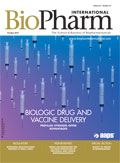Continuous Improvement in Biopharma Manufacturing
Unexpected problems can become opportunities to share knowledge and improve processes.
When unexpected problems arise, an effective response and smart thinking form the basis of continuous improvement, which is fast becoming ingrained as a cultural must-have in the bioprocessing world. The following example serves to show not just how biopharmaceutical companies see problems as opportunities to improve, but also how they are effectively leveraging company collaborations to develop joint solutions even more rapidly and effectively.
Case Study in Continuous Improvement
When a number of companies from the BioPhorum Operations Group (BPOG) collaboration shared information about foreign residues they had detected in the form of white rings in the vessels containing buffer solutions, they realized that they could pool their knowledge and reach a solution quicker than by tackling the problem alone. Multiparty and concerted implementation was also going to be crucial in getting other stakeholders to accept requested changes without unnecessary delay.
The presence of such residues had given rise to non-conformance investigations and questions from regulatory authorities. While a detrimental effect from these foreign residues on end-product quality and process performance was thought to be unlikely, getting to the bottom of these phenomena was important. By doing so, understanding of the root cause and lack of impact on the process performance and product quality was demonstrated and evidence of control verified.
Analysis had revealed the materials in the foreign residues were comprised of fatty acid derivatives such as erucamide and oleamide and also insoluble salts like talc and kaolin/clay (silica and silicates). Where had these fatty acid derivatives come from and how could they be eliminated? The answers, as is becoming more often the case in the industry, were found two or three steps removed from the pharmaceutical bioprocess.
Raw materials used in buffer solutions are stored and transported in bins lined with plastic bags. These plastic bags are manufactured from films made by extrusion for a range of purposes and industries. To enable effective manufacture and use, slip and anti-block additives are added to resins to promote slip between the layers of the film and reduce friction and ‘tackiness’ to increase the ability of the material to slide over itself and contact surfaces. The unintended consequence, therefore, is that trace amounts mix with the materials stored in the plastics liners and subsequently appear in bioprocess preparation tanks.
In the short term, benchmarking showed that it is common practice to change cleaning procedures by using stronger detergents and more aggressive physical removal. These steps introduce non-value-adding activities, however, at a time when simplification is an important goal and do not eliminate the source of the problem. The agreed upon preventative action was to remove slip and anti-block agents out of the equation altogether.
While supplier specifications are widely used, including user requirement definitions of what is needed for packaging liners, the benchmarking showed that specifying ‘no slip agents’ was not customary. Adding and verifying such requirements would be a good first step, but further proactive actions were deemed useful. The industry is now developing a mindset (correctly) that they must work with suppliers cooperatively to help manage change and to develop solutions that are mutually acceptable.
Research showed that low-density polyethylene and linear low-density polyethylene liners are the most frequently used liners in packaging raw materials. Many grades include the use of slip and anti-block agents but some grades do not. High-density polyethylene materials are used less frequently.
It was not the aim of the team to determine which alternatives should be used. The team simply concluded that there is a sufficient array of solutions that eliminate the possibility of unexpected foreign materials appearing where they are not wanted. Armed with this insight, both the end users, and the tier-1 and tier-2 suppliers, can collectively assess the options and make clear decisions for change.
Industry Makes a Change
To compliment individual programs, BPOG is communicating with the supply base to explain the problem, offer a variety of solutions, and collect feedback. In the space of only a few months, the industry has collectively benchmarked a common problem, evaluated corrective and preventive approaches, and started a process of implementation.
Continuous improvement is a journey not a destination. With one challenge identified and met, the next one can be tackled with increased confidence and enthusiasm.

About the Author
Simon Chalk is director of the BioPhorum Operations Group, simon@biophorum.com.

Thermo Fisher Opens Advanced Therapies Collaboration Center in California
April 18th 2025The 6000-square-foot facility will provide cell therapy developers the support they need to transition to CGMP manufacturing, and an expanded footprint of the new center is expected to open in Philadelphia later in 2025.